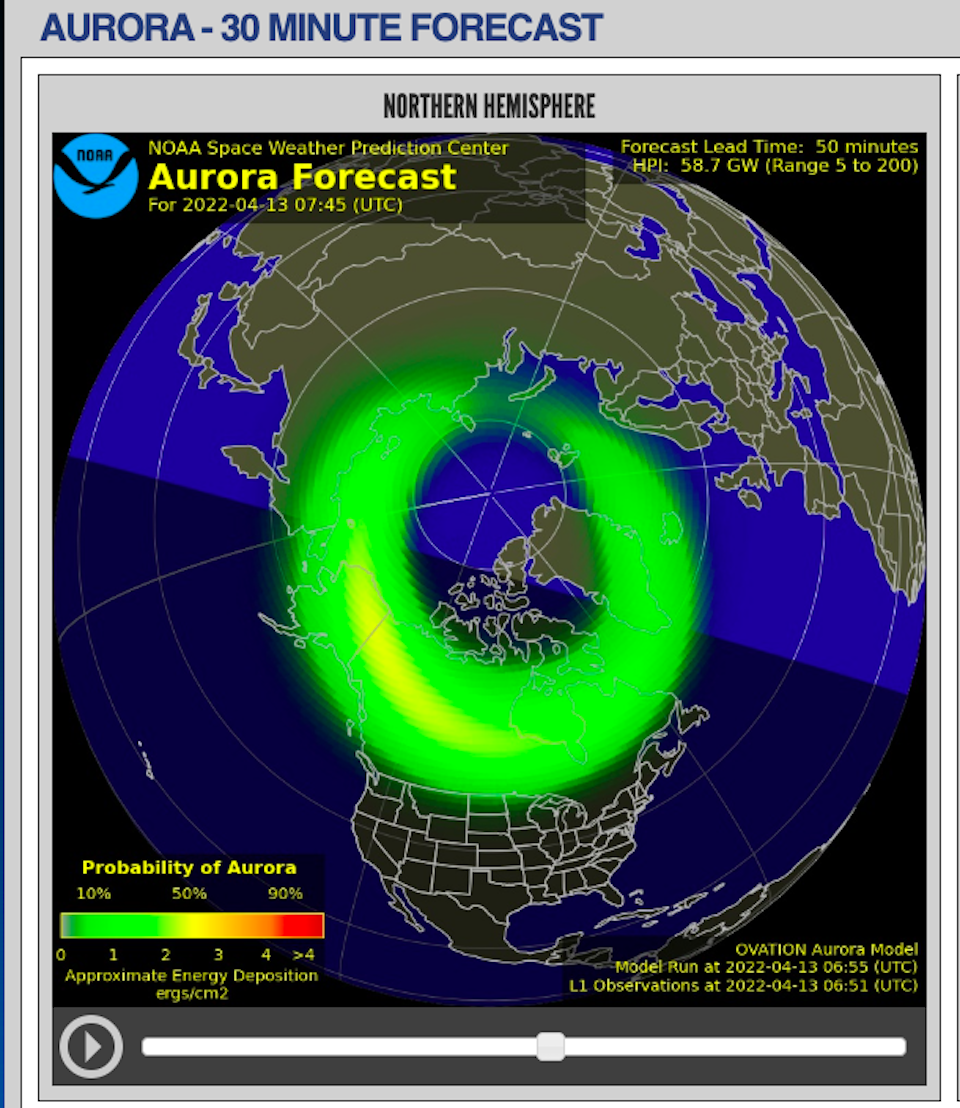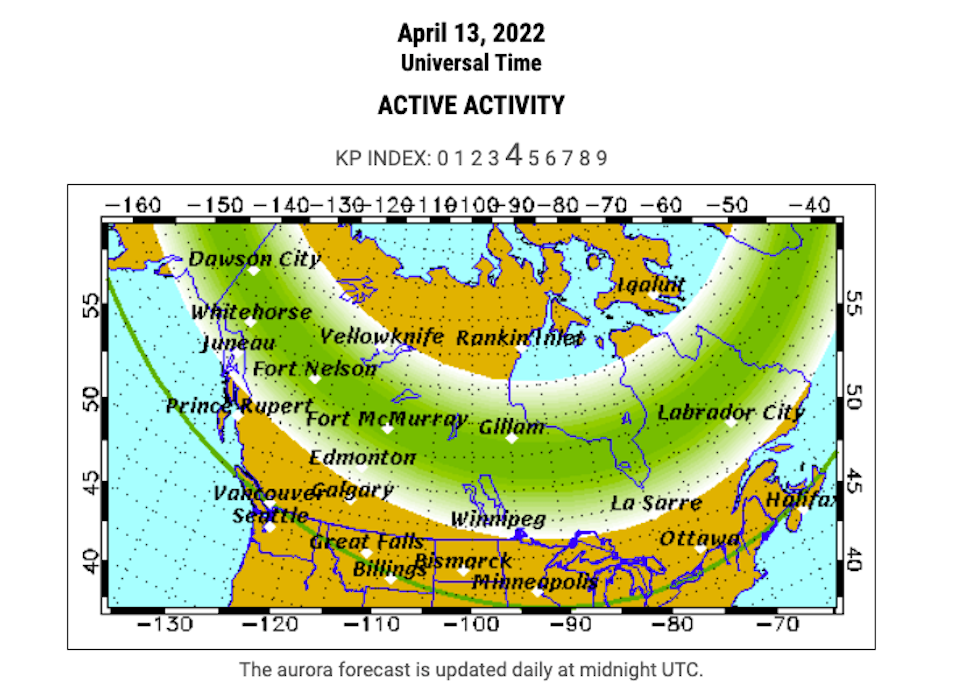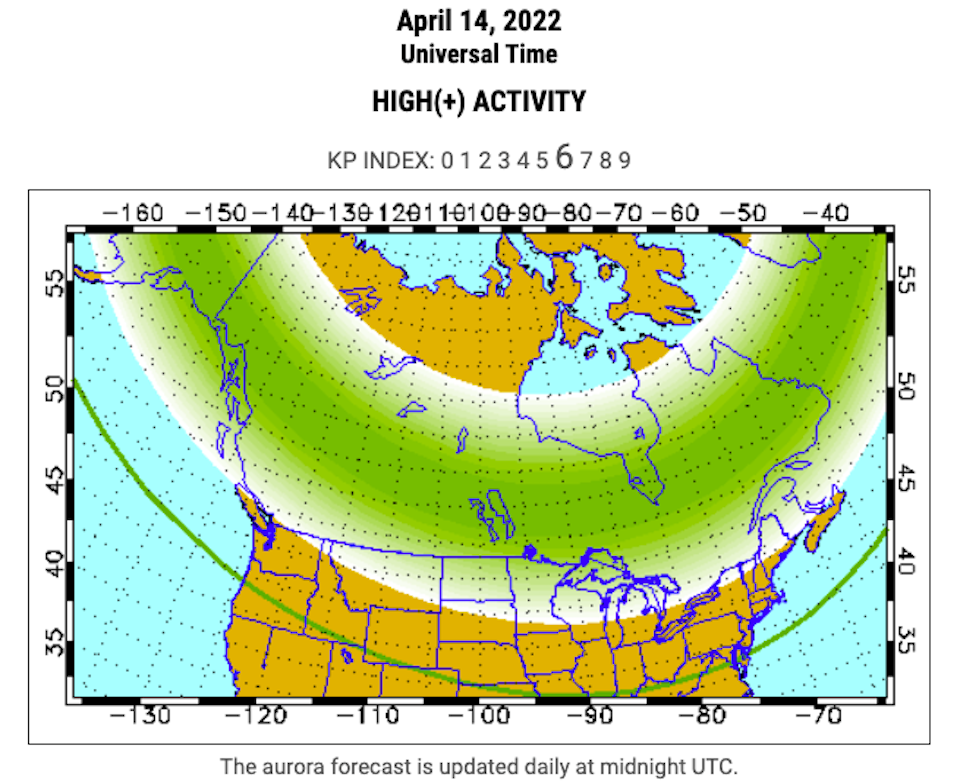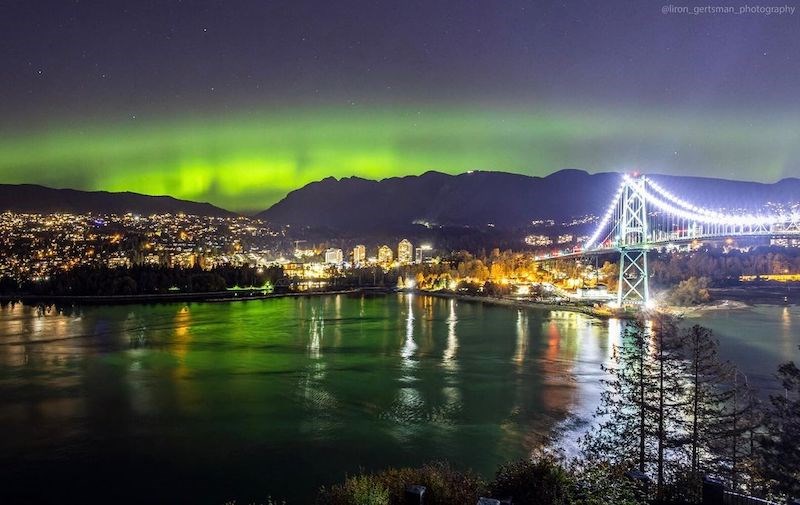Stormy space weather may provide the perfect conditions for dazzling northern lights in local skies — provided the skies stay clear, of course.
The National Oceanic and Atmospheric Administration (NOAA)'s Space Weather Prediction Center has issued a G2 (Moderate) geomagnetic storm warning for Thursday (April 14) "due to the anticipated arrival of a full halo [coronal mass ejection]" that came from the sun on Monday. Additionally, G2 (Minor) geomagnetic storms are likely to carry over into Friday.
G2 (Moderate) and G1 (Minor) geomagnetic storm watches are in effect for 14 and 15 Apr. pic.twitter.com/wprL0jrwcB
— NOAA Space Weather (@NWSSWPC) April 13, 2022
Space Weather Canada has also issued a notification for stormy geomagnetic activity in the auroral zone.
13 Apr 07:15 UT STORMY geomagnetic activity currently observed: auroral zone https://t.co/mCrvDWsg9h
— Space Weather Canada (@SpaceWeatherCA) April 13, 2022
As of 11:30 a.m. Wednesday, NOAA's 30-minute forecast shows the aurora's vibrant green glow expanding towards the Lower Mainland. However, April 13 isn't slated to have the most stormy geomagnetic activity.

But according to the University of Fairbanks (UAF), the green glow may be viewable "overhead from Inuvik, Yellowknife, Rankin and Iqaluit to Juneau, Edmonton, Winnipeg and Sept-Iles, and visible low on the horizon from Vancouver, Great Falls, Pierre, Madison, Lansing, Ottawa, Portland and St. Johns."
The university's online aurora monitor map shows what regions the aurora's green glow will likely reach, as well as other areas where there is less of a possibility. Additionally, there is a brief description below the map of the aurora activity on that particular day. You can switch to other days to see the forecast, too.

The best day to view the northern lights will be on Thursday, weather permitting. Highly active auroral displays will be visible overhead from Inuvik to Yellowknife, down from Vancouver to Toronto, and as low on the horizon as Salem to Indianapolis, according to the UAF.

What is the best time of night to see aurora?
UAF recommends that you plan to be out for three or four hours around midnight. That said, the dancing lights are active throughout the night. Since clear sky and darkness are both essential to see aurora, the best time is dictated by the weather and by the sunrise and sunset times. The moon is also very bright and can make it more difficult to view the aurora, so lunar cycles should be taken into account.
Find out more information about when to see the vibrant display with the UAF's aurora monitor map.



